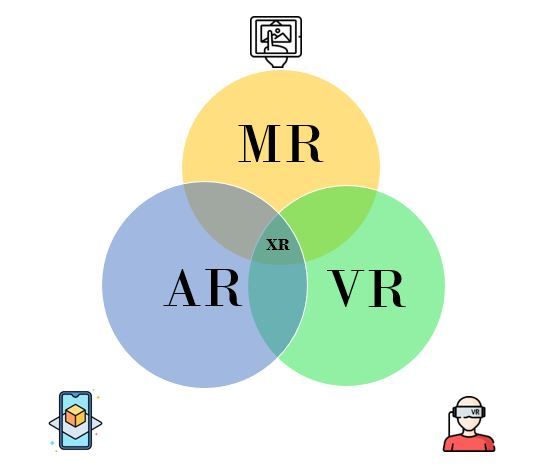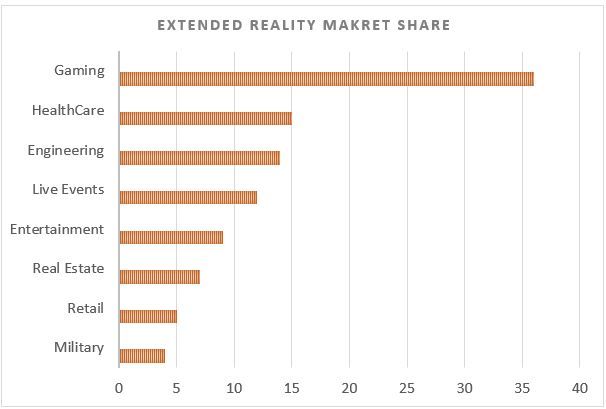Exploring the Future: How Extended Reality is Transforming Everyday Life
Extended Reality or XR is an upcoming umbrella term for all the technologies that are immersive. XR is a term which refers to all real and virtual combined environments and machine interaction with human which is generated by computer technologies and wearables. It comprises of representative forms such as Augmented reality (AR), Mixed Reality (MR) and Virtual Reality (VR) and the region interpolated among them.

By integrating the virtual and “real” worlds together or by generating a completely immersive experience, all immersive technologies enhance the reality we experience. According to recent research, more than 60% of respondents think XR would become widely used within the following five years.
Augmented reality (AR)
- In augmented reality, digital items and information are placed on the real world. Through this encounter, digital details like photographs, text, and animation augment the real world. Through televisions, tablets, and smartphones in addition to AR glasses, you can access the experience. The most well-known applications of AR include the Pokémon GO game.
Virtual reality (VR)
- Users are completely submerged in a digital simulation during a virtual reality experience, as opposed to augmented reality. For a 360-degree view of an artificial world that tricks the brain into thinking the user is, for example, walking on the moon, diving under the ocean, or entering whatever new universe the VR developers built, users must wear a VR headset or head-mounted display.
Mixed reality (MR)
- Real-time interaction between digital and physical items is possible in mixed reality. Hybrid reality is a term that has been used to describe this most recent immersive technology. It needs far more computing power than VR or AR and an MR headset. One excellent example is Microsoft’s HoloLens, which, among other things, enables you to place digital objects into the space in which you are now standing and allows you to spin them around or interact with them however you see fit.
Market Outlook
- The extended reality market share is expected to increase by USD 176.74 billion from 2019 to 2024, and the market’s growth momentum will decelerate at a CAGR of 60.46%
- According to estimates from Forbes, 58.9 million Americans will use virtual reality in 2021, and 93.3 million will use augmented reality at least monthly.
- At a CAGR of 15.0% from 2022 to 2028, the size of the global Extended Reality market is anticipated to increase from USD 25,310 million in 2021 to USD 67,870 million by that year.
- The market for augmented and virtual reality was estimated to be worth $14.84 billion in 2020 and is anticipated to grow to USD 454.73 billion by 2030, representing a Compound Annual Growth Rate (CAGR) of 40.7 percent.
- At a CAGR of 28.7% from 2022 to 2028, the size of the worldwide Mixed Reality market is anticipated to increase from USD 331.4 million in 2021 to USD 2482.9 million by 2028.
- Gaming has the biggest share (36%) when it comes to Extended reality followed by Healthcare and even Militaries usage of XR has increased tremendously in the past few years

Conclusion
The foundation of Extended Reality is enactivism; all of the senses are stimulated to produce an authentic, realistic experience that involves and affects the entire body. As the most recent narrative tool available to us, XR emphasises the limitless possibilities for connecting with one another in ways that balance importance and affordability, closeness and distance, and safety and risk. Using XR for humanitarian work entails more than just matching with comparable markets italso entails planning for inclusion, communicating a universal message, and getting ready for the world’s response.
